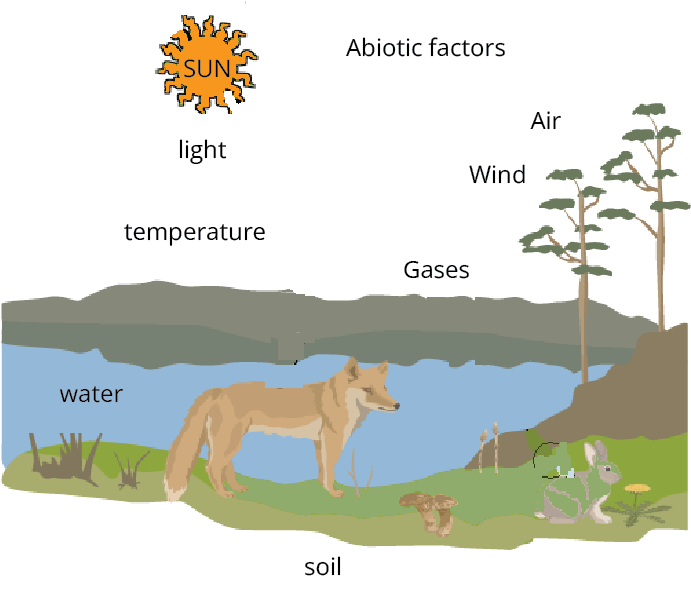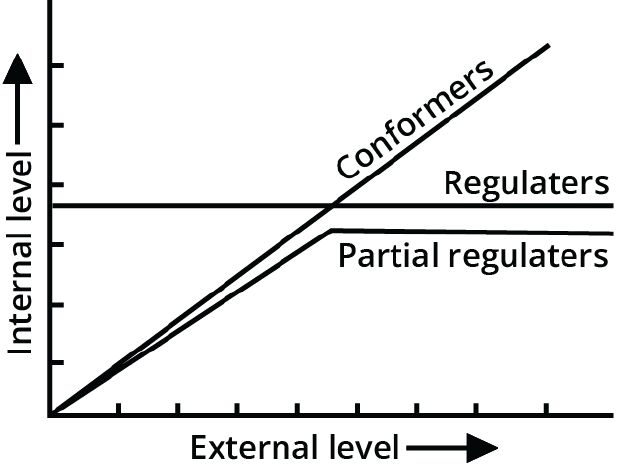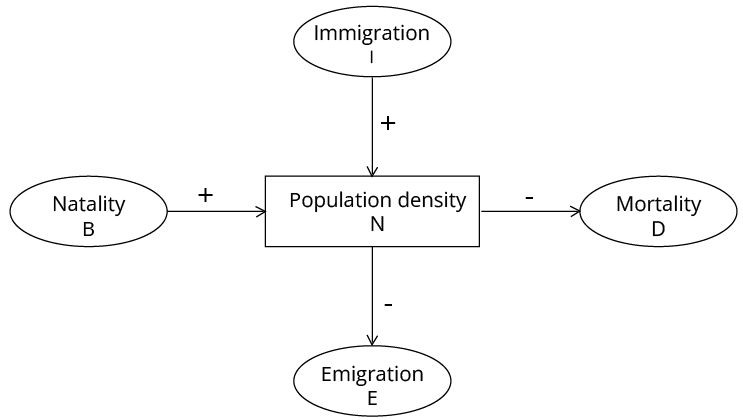Biology Notes for Chapter 11 Organisms And Populations Class 12 - FREE PDF Download


FAQs on Organisms And Populations Class 12 Biology Chapter 11 CBSE Notes - 2025-26
1. What are the essential core concepts to focus on for a quick revision of the Organisms and Populations chapter?
For a complete and quick summary of this chapter, focus on these core concepts as per the CBSE 2025-26 syllabus:
- Ecological Hierarchy: The levels from organism to biome.
- Abiotic Factors: Key environmental factors like temperature, water, light, and soil and their influence.
- Responses to Abiotic Factors: How organisms cope through regulation, conformity, migration, and suspension (hibernation/aestivation).
- Population Attributes: Concepts like natality (birth rate), mortality (death rate), sex ratio, and age pyramids.
- Population Growth Models: The difference between exponential and logistic growth, and the concept of carrying capacity (K).
- Population Interactions: The six main types – predation, competition, parasitism, mutualism, commensalism, and amensalism.
- Adaptations: Morphological, physiological, and behavioural changes for survival.
2. For revision, what are the four major abiotic factors and their primary effects on organisms?
A quick recap of the major abiotic factors includes:
- Temperature: This is the most ecologically relevant factor. It affects the kinetics of enzymes and thus the metabolic activity and geographical distribution of organisms (eurythermal vs. stenothermal).
- Water: Life is unsustainable without water. Its availability determines the productivity and distribution of organisms. For aquatic organisms, the chemical composition and pH are crucial.
- Light: It is essential for photosynthesis in autotrophs. Light intensity and duration also affect animal activities like foraging, migration, and reproduction.
- Soil: The nature and properties of soil (composition, pH, mineral content) determine the type of vegetation and the animals that can be supported in an area.
3. How can you quickly summarise the difference between exponential and logistic growth for revision?
Here is a simple summary to differentiate the two population growth models:
- Exponential Growth (J-shaped curve): Occurs when resources like food and space are unlimited. The population grows at a geometric rate, leading to a steep, J-shaped curve. The rate of increase depends on the intrinsic rate of natural increase (r).
- Logistic Growth (S-shaped curve): Occurs when resources are limited. The growth shows a lag phase, followed by rapid acceleration, and finally slows down as it approaches the environment's carrying capacity (K). This results in a sigmoid or S-shaped curve.
4. How are the concepts of population growth and carrying capacity (K) interlinked in this chapter?
Population growth describes how a population's size changes over time. Carrying capacity (K) is a critical concept that links to this growth; it represents the maximum population size that a specific environment can sustainably support given its limited resources. When a population is small, it may grow exponentially. However, as it approaches the carrying capacity (K), its growth rate slows down due to increased competition for resources, eventually leading to the S-shaped logistic growth pattern where the population size stabilises around K.
5. What is a simple method to remember the six key population interactions for revision?
A helpful revision strategy is to use a notation system where '+' denotes a benefit, '-' denotes harm, and '0' denotes no effect. The six interactions are:
- Mutualism (+, +): Both species benefit. Example: Lichens (algae and fungi).
- Competition (-, -): Both species are harmed as they compete for the same limited resources.
- Predation (+, -): One species (predator) benefits, while the other (prey) is killed.
- Parasitism (+, -): One species (parasite) benefits, while the other (host) is harmed but usually not killed immediately.
- Commensalism (+, 0): One species benefits, while the other is unaffected. Example: An orchid growing on a mango tree.
- Amensalism (-, 0): One species is harmed, while the other is unaffected.
6. Why is understanding the difference between eurythermal and stenothermal organisms important for revision?
Understanding this distinction is key to revising the topic of adaptation and species distribution. Eurythermal organisms can tolerate a wide range of temperatures, allowing them to have a wider geographical distribution. In contrast, stenothermal organisms are restricted to a narrow temperature range and are found only in specific, stable thermal environments. This concept helps explain why certain species are found in particular biomes and how they respond to climate changes.
7. Why are very small animals typically not found in polar regions? How does this concept connect to homeostasis?
This is a classic application of the concept of homeostasis and thermoregulation. Small animals have a larger surface area to volume ratio compared to larger animals. This means they lose body heat very rapidly to the cold surroundings. Maintaining a constant internal body temperature (homeostasis) in such extreme cold would require an enormous amount of metabolic energy, which is not sustainable. Therefore, very small animals are rarely found in polar regions as they cannot efficiently regulate their body temperature.
8. What are some common misconceptions to avoid when revising concepts like population interactions and growth models?
To ensure conceptual clarity during revision, avoid these common pitfalls:
- Confusing competition types: Remember that competition is not just between different species (interspecific), but also occurs within the same species (intraspecific), which is often more intense.
- Misinterpreting growth models: Don't assume population growth is always exponential. The logistic model is more realistic as it accounts for limited resources and carrying capacity (K).
- Mixing up interactions: Be clear on the difference between mutualism (+/+), where both benefit, and commensalism (+/0), where only one benefits and the other is neutral.
9. Which diagrams are most effective for a rapid visual summary of this chapter?
For a quick and effective visual revision, focusing on the following diagrams is highly recommended:
- Age Pyramids: The three types (expanding, stable, and declining) provide a quick summary of a population's status.
- Population Growth Curves: The J-shaped curve for exponential growth and the S-shaped (sigmoid) curve for logistic growth are fundamental to understanding population dynamics.
- Organism Response Graph: A graph showing the responses of regulators, conformers, and partial regulators to external abiotic conditions.






























